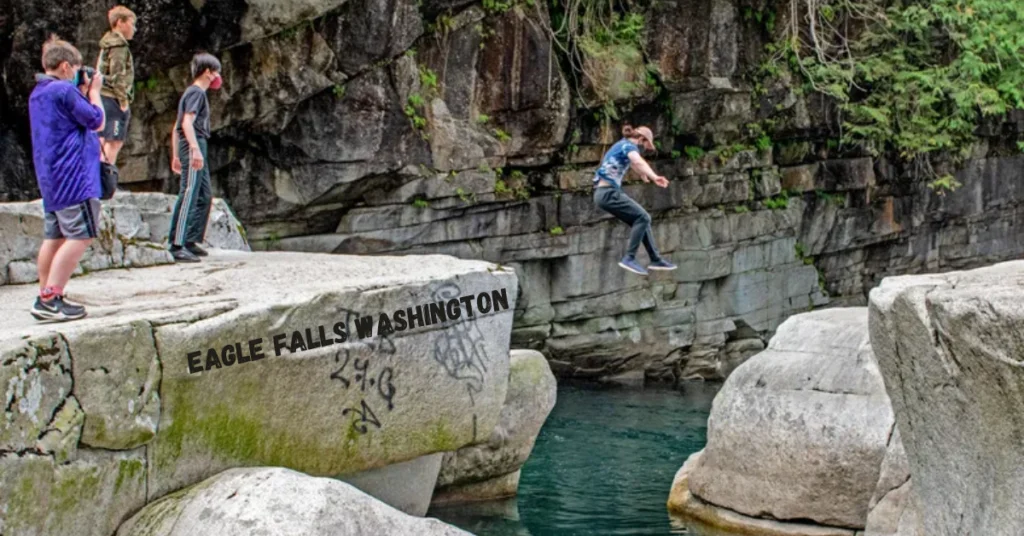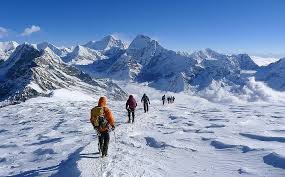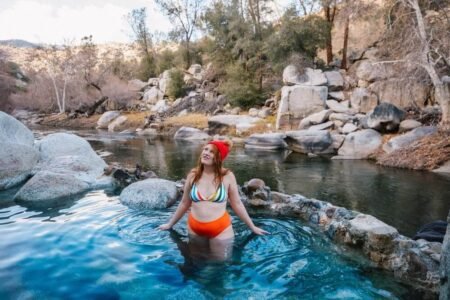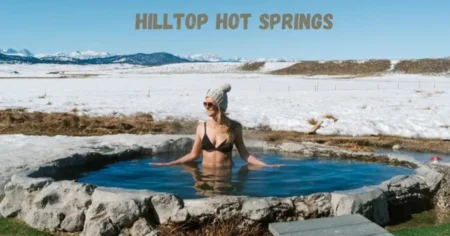Introduction
Nestled in the heart of Washington State’s Cascade Mountains, Eagle Falls is a breathtaking natural gem that attracts outdoor enthusiasts from across the region. Located along the Skykomish River, this waterfall offers stunning scenery, thrilling recreational activities like swimming and cliff jumping, and an inviting atmosphere for those seeking both adventure and tranquility in the great outdoors.
With its accessible location off Highway 2 and its proximity to larger towns like Gold Bar and Index, Eagle Falls is a favored day-trip destination for Seattle residents and visitors alike. In this comprehensive guide, we will delve deep into the allure of Eagle Falls, its historical and geological significance, safety tips for visitors, nearby attractions, and much more. Whether you’re planning your first visit or returning for another adventure, this guide will provide you with everything you need to know about Eagle Falls, Washington.
Location and Accessibility
Coordinates:
- Latitude: 47.7233° N
- Longitude: 121.5042° W
Nearest Town:
- Index, Washington
Distance from Seattle:
- Roughly 55 miles east of Seattle (approximately a 1-hour drive) via Highway 2.
Directions to Eagle Falls
To reach Eagle Falls Washington start by heading east on Highway 2 from Seattle. You will pass through several small towns, including Monroe and Sultan, before reaching Gold Bar. Continue past Gold Bar for another 10 miles, and you will soon arrive at the falls, which are located near the small town of Index. The waterfall is situated close to the road, making it easily accessible without requiring a strenuous hike. There is limited roadside parking available, so it’s recommended to arrive early, especially on weekends or during the summer months.
Eagle Falls is often considered a “hidden gem,” as it’s less crowded than some of the more famous waterfalls in the Pacific Northwest, but its ease of access and natural beauty make it a popular destination, particularly in the warmer months.
History and Significance of Eagle Falls

Eagle Falls has long been a significant natural landmark for the local Indigenous tribes, particularly the Coast Salish peoples, who have inhabited the Pacific Northwest for thousands of years. The falls, and the river in which they reside, have served as a source of sustenance, travel, and spiritual connection for these communities. The Skykomish River, of which Eagle Falls is a part, was historically abundant with salmon, a crucial resource for both sustenance and trade.
As European settlers arrived in the 19th century, the region became more developed, and the falls were noted as a picturesque stop along the highway between Seattle and Stevens Pass. Despite increasing development, the area around Eagle Falls has remained relatively undeveloped compared to other regions, preserving its natural beauty and appeal.
The falls were likely named after the majestic eagles that are commonly spotted in the area, especially during salmon runs. These birds of prey are often seen soaring above the river, hunting for fish. This adds to the symbolic significance of the location, combining the beauty of the natural landscape with the presence of one of nature’s most iconic creatures.
Geology of Eagle Falls
Eagle Falls Washington is located within the Cascade Mountain range, a geologically active region shaped by tectonic forces and volcanic activity over millions of years. The falls are part of the Skykomish River, which is fed by glaciers and snowmelt from the surrounding mountains. The constant flow of water over time has carved out the rock formations that define the area, creating the cascading waterfall that visitors enjoy today.
The Skykomish River itself is a vital part of the hydrological system of the region. It flows through the western Cascades and eventually joins the Snohomish River before emptying into the Puget Sound. Along its journey, the river passes through several dramatic landscapes, with Eagle Falls being one of the highlights.
The rocks around the falls are primarily composed of granitic formations, typical of the Cascade Mountains. These rocks, combined with the constant erosion from the water, create unique patterns and formations, making the area a favorite among geology enthusiasts.
Features of Eagle Falls

| Feature | Description |
|---|---|
| Waterfall Type | Cascade |
| Height | Approximately 25 feet |
| River | Skykomish River |
| Flow | Moderate but can become intense during spring melts and after heavy rainfall |
| Best Time to Visit | Late Spring to Early Fall (May to September) |
| Swimming | Popular, but caution is advised due to strong currents |
| Hiking Trails | No official trails; easy access via a short walk from the roadside |
| Picnic Area | No designated picnic areas; riverside spots available |
| Parking | Limited roadside parking available; it can get crowded on weekends |
Eagle Falls is characterized by its cascading nature, where the water flows down a series of rocky steps into a pool below. Though not the tallest waterfall in Washington, its beauty lies in its setting — surrounded by the towering trees of the Cascade forests and the crystal-clear waters of the Skykomish River.
Recreational Activities at Eagle Falls
Eagle Falls offers visitors a variety of activities to enjoy, ranging from adventure sports to tranquil nature experiences. Here’s a closer look at what you can do when you visit:
1. Sightseeing and Photography
The first thing that will strike any visitor to Eagle Falls is the breathtaking scenery. Whether you’re an amateur photographer or a seasoned professional, Eagle Falls provides a dramatic backdrop. The waterfall, combined with the surrounding forests and mountains, creates an ideal setting for nature photography.
For the best shots, consider visiting in the early morning or late afternoon when the light is soft, enhancing the colors and textures of the landscape. Don’t forget to capture the powerful flow of the Skykomish River as it rushes past the rocks.
2. Swimming and Cliff Jumping
One of the most popular activities at Eagle Falls is swimming in the cool, clear waters of the Skykomish River. The pool beneath the falls is a refreshing spot for swimmers, particularly on hot summer days. However, caution is crucial as the river currents can be strong, and the water level can rise rapidly, especially after rainfall or during spring snowmelt.
For thrill-seekers, Eagle Falls is also known as a spot for cliff jumping. Adventurers can jump from various heights into the pool below. However, this activity carries inherent risks, including underwater rocks and varying water depths. It’s essential to carefully assess the conditions and exercise caution.
3. Picnicking
While Eagle Falls Washington doesn’t have official picnic areas, many visitors enjoy packing a lunch and finding a spot along the riverbank. The tranquil surroundings provide the perfect setting for a peaceful meal in nature. It’s recommended to bring a blanket or portable chairs since there are no tables or benches available.
Make sure to follow “Leave No Trace” principles and take all your trash with you. Keeping the area clean is essential for preserving the natural beauty of Eagle Falls for future visitors.
4. Fishing
The Skykomish River is a well-known fishing spot, especially for salmon and trout. Anglers often visit Eagle Falls to fish in the calm stretches of the river downstream from the falls. During salmon runs, the river is teeming with fish, making it an ideal spot for fishing enthusiasts.
Make sure to check local fishing regulations, as certain parts of the river may have restrictions or require specific permits, especially during peak seasons.
5. Hiking
Though there are no official hiking trails at Eagle Falls itself, the surrounding area offers numerous hiking opportunities. For those who wish to explore more of the Cascade wilderness, nearby hikes such as the Wallace Falls Trail or the Barclay Lake Trail offer additional scenic adventures. Hiking in this region provides opportunities to see more waterfalls, lush forests, and panoramic mountain views.
Safety Tips for Visitors

Eagle Falls may look serene, but it holds hidden dangers, particularly around the water. Here are some key safety considerations to ensure a safe and enjoyable visit:
| Hazard | Safety Tip |
|---|---|
| Strong Currents | The water may look calm at times, but it can be deceptively strong, particularly near the falls. Avoid swimming too close to the waterfall, especially after heavy rain. |
| Cliff Jumping Risks | Only jump if you are absolutely sure about the water depth and conditions. Always check for submerged rocks and make sure the water is deep enough for a safe landing. |
| Slippery Rocks | Wet rocks around the falls can be incredibly slippery due to moss and algae growth. Wear shoes with good grip, especially if you plan on walking near the edge of the river. |
| No Lifeguards | There are no lifeguards at Eagle Falls, so exercise extreme caution if swimming or cliff jumping. Make sure to bring a friend and never swim alone. |
| Temperature Considerations | The water can be very cold, even in summer, due to snowmelt from the mountains. Hypothermia can set in quickly, so limit your time in the water. |
| Parking and Road Safety | The roadside parking can become crowded and the highway nearby is busy, so be careful when walking to and from your car. Arrive early to secure a safe spot. |
Following these safety guidelines can help ensure that your visit is as safe as it is enjoyable. Remember, nature can be unpredictable, so always prioritize your well-being over risky behavior.
Nearby Attractions
If you’re planning a day trip to Eagle Falls, you may want to explore other nearby attractions. Washington’s Cascade Mountains are filled with stunning natural wonders, charming small towns, and additional outdoor activities.
1. Wallace Falls State Park
Located just 15 miles west of Eagle Falls, Wallace Falls State Park is home to one of Washington’s most famous waterfalls. The park offers several hiking trails of varying lengths, with the main trail leading to stunning viewpoints of the 265-foot Wallace Falls. This is a great addition to your itinerary if you’re looking for more waterfall action and a moderately challenging hike.
2. Stevens Pass Ski Resort
During the winter months, Stevens Pass Ski Resort becomes a hub for skiing and snowboarding. Located about 30 miles east of Eagle Falls, this resort offers world-class skiing and snowboarding opportunities in the beautiful Cascade Mountains. In the summer, the resort opens up for mountain biking and scenic chairlift rides, making it a year-round destination.
3. The Town of Index
Just a short drive from Eagle Falls, the town of Index is a quaint and picturesque stop along Highway 2. Known for its rugged mountain scenery and rock climbing opportunities, Index is a great place to explore if you’re interested in outdoor sports or just want to enjoy a quiet afternoon in a small mountain town.
4. Bridal Veil Falls and Lake Serene
For hikers seeking a more challenging adventure, the Bridal Veil Falls and Lake Serene Trail is a must-visit. This 8.2-mile round-trip hike offers incredible views of Bridal Veil Falls, a 1,328-foot waterfall, as well as the stunning alpine Lake Serene. This trailhead is located near Index, making it a perfect addition to a visit to Eagle Falls for those looking to spend more time in the area.
5. Deception Falls
Another nearby waterfall worth visiting is Deception Falls, located just 20 miles east of Eagle Falls along Highway 2. This family-friendly destination features a short, easy hike to the falls and offers picnic areas and restrooms, making it a great spot for a relaxing break during your journey.
Conservation and Environmental Efforts
As with many natural sites in Washington, Eagle Falls faces environmental challenges due to increased visitor traffic and human impact. The surrounding ecosystems are delicate, and without proper care, the natural beauty of Eagle Falls could be compromised. Visitors are encouraged to follow “Leave No Trace” principles to minimize their environmental footprint.
Local conservation groups and volunteers often organize clean-up events in the area to keep the riverbanks clean and remove litter left by careless visitors. Additionally, efforts are being made to educate visitors on the importance of preserving the natural habitat of the Skykomish River and its wildlife, particularly the salmon population that depends on the river’s health.
Conclusion
Eagle Falls Washington is a hidden gem in Washington’s Cascade Mountains, offering visitors a serene and adventurous retreat into nature. Whether you’re seeking a refreshing dip in the river, an exhilarating cliff-jumping experience, or simply a peaceful spot to enjoy the beauty of the Pacific Northwest, Eagle Falls has something for everyone.
By taking the time to plan your visit carefully, respecting the environment, and prioritizing safety, you can make the most of your trip to this stunning natural attraction. So, pack your picnic, lace up your hiking boots, and head out to Eagle Falls for an unforgettable day in the heart of Washington’s wilderness.









